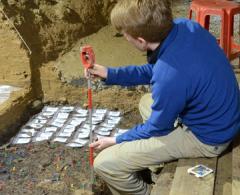
This Article From Issue
September-October 2020
Volume 108, Number 5
Page 260
To the Editors:
I got rather behind in reading my issues of American Scientist but have been catching up while in isolation these past few months. I always find more of interest than I expect, so I am glad I finally did my reading.
However, I was brought up short by the introductory paragraph of Daniel Bauer’s article “Searching for Dark Matter” (September–October 2018). He attributes the concept of dark matter to astronomer Fritz Zwicky in the 1930s but then writes, “The idea wasn’t given much credence in the scientific community until the 1970s, when astronomers began to notice similar effects in the velocities of stars on the outskirts of individual galaxies.”
“Astronomers”? It is well known that the case for dark matter became irrefutable due to the work of astronomer Vera Rubin and her colleagues, who observed that the rotation curves in spiral galaxies remained flat to very large distances from the galactic center. This surprising result was corroborated by other astronomers but the discovery was that of Rubin who, led the original work. Leaving her name out of this article is a slap in the face to her and to her scientific memory.
Gretchen Harris
Hamilton, ON
Editors’ note: We were all disappointed that Vera Rubin’s work was overlooked for the Nobel Prize in Physics, and we regret failing to highlight her central role in the discovery of dark matter. We have updated the online article to include her. Rubin has recently been honored with the naming of the Vera C. Rubin Observatory: www.lsst.org

American Scientist Comments and Discussion
To discuss our articles or comment on them, please share them and tag American Scientist on social media platforms. Here are links to our profiles on Twitter, Facebook, and LinkedIn.
If we re-share your post, we will moderate comments/discussion following our comments policy.